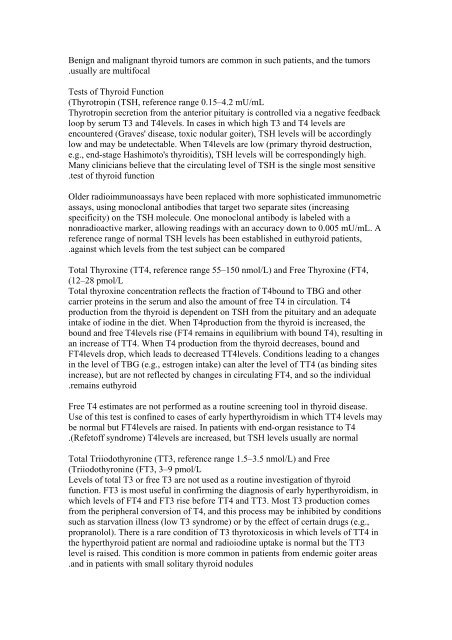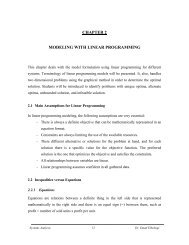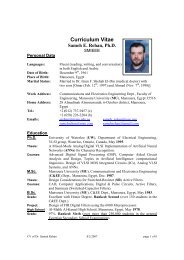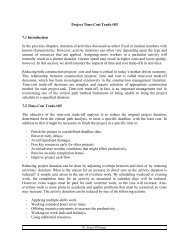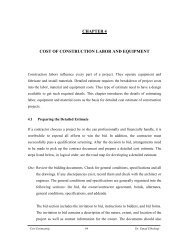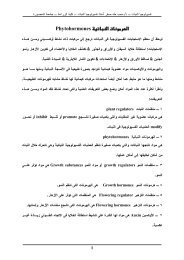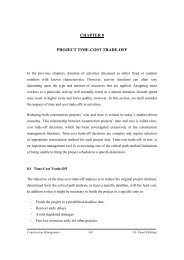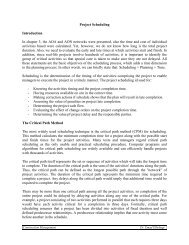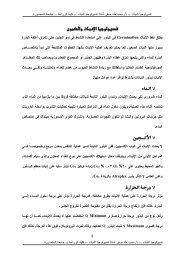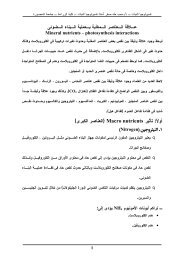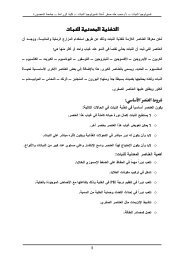Thyroid and Parathyroid
Thyroid and Parathyroid
Thyroid and Parathyroid
Create successful ePaper yourself
Turn your PDF publications into a flip-book with our unique Google optimized e-Paper software.
Benign <strong>and</strong> malignant thyroid tumors are common in such patients, <strong>and</strong> the tumors<br />
. usually are multifocal<br />
Tests of <strong>Thyroid</strong> Function<br />
( Thyrotropin (TSH, reference range 0.15–4.2 mU/mL<br />
Thyrotropin secretion from the anterior pituitary is controlled via a negative feedback<br />
loop by serum T3 <strong>and</strong> T4levels. In cases in which high T3 <strong>and</strong> T4 levels are<br />
encountered (Graves' disease, toxic nodular goiter), TSH levels will be accordingly<br />
low <strong>and</strong> may be undetectable. When T4levels are low (primary thyroid destruction,<br />
e.g., end-stage Hashimoto's thyroiditis), TSH levels will be correspondingly high.<br />
Many clinicians believe that the circulating level of TSH is the single most sensitive<br />
. test of thyroid function<br />
Older radioimmunoassays have been replaced with more sophisticated immunometric<br />
assays, using monoclonal antibodies that target two separate sites (increasing<br />
specificity) on the TSH molecule. One monoclonal antibody is labeled with a<br />
nonradioactive marker, allowing readings with an accuracy down to 0.005 mU/mL. A<br />
reference range of normal TSH levels has been established in euthyroid patients,<br />
. against which levels from the test subject can be compared<br />
Total Thyroxine (TT4, reference range 55–150 nmol/L) <strong>and</strong> Free Thyroxine (FT4,<br />
( 12–28 pmol/L<br />
Total thyroxine concentration reflects the fraction of T4bound to TBG <strong>and</strong> other<br />
carrier proteins in the serum <strong>and</strong> also the amount of free T4 in circulation. T4<br />
production from the thyroid is dependent on TSH from the pituitary <strong>and</strong> an adequate<br />
intake of iodine in the diet. When T4production from the thyroid is increased, the<br />
bound <strong>and</strong> free T4levels rise (FT4 remains in equilibrium with bound T4), resulting in<br />
an increase of TT4. When T4 production from the thyroid decreases, bound <strong>and</strong><br />
FT4levels drop, which leads to decreased TT4levels. Conditions leading to a changes<br />
in the level of TBG (e.g., estrogen intake) can alter the level of TT4 (as binding sites<br />
increase), but are not reflected by changes in circulating FT4, <strong>and</strong> so the individual<br />
. remains euthyroid<br />
Free T4 estimates are not performed as a routine screening tool in thyroid disease.<br />
Use of this test is confined to cases of early hyperthyroidism in which TT4 levels may<br />
be normal but FT4levels are raised. In patients with end-organ resistance to T4<br />
. (Refetoff syndrome) T4levels are increased, but TSH levels usually are normal<br />
Total Triiodothyronine (TT3, reference range 1.5–3.5 nmol/L) <strong>and</strong> Free<br />
( Triiodothyronine (FT3, 3–9 pmol/L<br />
Levels of total T3 or free T3 are not used as a routine investigation of thyroid<br />
function. FT3 is most useful in confirming the diagnosis of early hyperthyroidism, in<br />
which levels of FT4 <strong>and</strong> FT3 rise before TT4 <strong>and</strong> TT3. Most T3 production comes<br />
from the peripheral conversion of T4, <strong>and</strong> this process may be inhibited by conditions<br />
such as starvation illness (low T3 syndrome) or by the effect of certain drugs (e.g.,<br />
propranolol). There is a rare condition of T3 thyrotoxicosis in which levels of TT4 in<br />
the hyperthyroid patient are normal <strong>and</strong> radioiodine uptake is normal but the TT3<br />
level is raised. This condition is more common in patients from endemic goiter areas<br />
.<br />
<strong>and</strong> in patients with small solitary thyroid nodules


